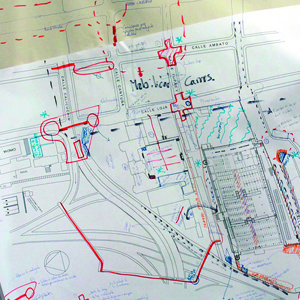Public dimension and political space hacking
DOI:
https://doi.org/10.35305/23626097v6i10.204Keywords:
public space, political space, architecture, project, human rightsAbstract
Our article puts forward a focus on the public dimension of architecture, highlighting certain possible features; particularly, those that can shed light on its potential as a field for the actualization and production of knowledge, in connection to the emancipatory strength of the public space. As we resume the descriptions and distinctions that Hannah Arendt’s develops through her oeuvre between the public space and the political one, we encounter an unusual ground for the perspective of the public space as the setting for expanding citizenship rights. Our reflections are based on the research of Anabella
Di Pego (2005; 2006) which has been guiding our study regarding the present significance of Arendt’s proposal. It is along these lines that we introduce our project experience in Mercado San Roque (MSR), Quito, Ecuador, illustrating the conflicts that take place in the public space concerning the struggles for meaning. Acknowledging this results in directing action towards certain necessary in-discipline: what we put forward as a possible political space hacking, aimed at new ways for occupying the public space, in which the architectural project is inscribed.
Downloads
Metrics

Downloads
Published
How to Cite
Issue
Section
License
Open access policy
A&P Continuidad is a non-profit and open access publication. According to Mexico Declaration on Cultural Policies, the journal distribution is submitted to Creative Commons Attribution-Noncommercial-ShareAlike 4.0 International Public License (CC BY-NC-SA). “Neither the commercial use of the original work nor that of the possible derivative works are allowed. The distribution of derivative works should be submitted to the license regulating the original work. This license is not free.”
A&P Continuidad authorizes the partial or full reproduction of texts and graphs provided that the source is cited. Authors are exclusively responsible for the criteria expressed in the articles which do not necessarily reflect the opinion of the Editorial Committee or that of the Direction Board. The copyright of the published articles pertains to their authors or publishers.
Transfer of rights
The acceptance of an article to be published implies the author’s transfer of rights to the journal. Authors continue to have the right to use the material in future books or publications, approve or veto the republication of their works as well as the rights related to patents or other rights. Transfer of rights form may be downloaded here.























 This OJS site and its metadata are under a
This OJS site and its metadata are under a 

